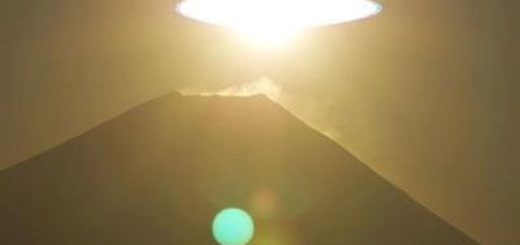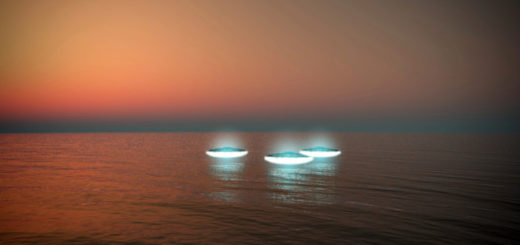SpaceX launching lightning tracker, ‘three-eyed’ Raven, deadly superbug for NASA

SpaceX is gearing up to launch its 10th commercial cargo mission on Saturday morning (Feb. 18), ferrying supplies and an assortment of science investigations to the International Space Station — including a deadly superbug, an advanced lightning sensor, a tool for new autonomous rendezvous capabilities and more.
Perched atop an upgraded Falcon 9 booster, the Dragon spacecraft will lift off from Kennedy Space Center’s Launch Pad 39A — marking the first time a vehicle has launched from the historic pad since the final, 2011 shuttle mission.
Once in orbit, the Dragon will spend two days chasing down the International Space Station. The six crewmembers on board have been preparing for the Dragon’s arrival, which is slated for Monday, Feb. 20. At approximately 11:30 a.m. EST, European astronaut Thomas Pesquet will use the space station’s 57.7-foot robotic arm to grapple the craft, assisted by NASA astronaut Shane Kimbrough. [These SpaceX Rocket Landing Photos Are Simply Jaw-Dropping]
The vehicle will remain berthed at the space station for about a month. During that time the crew will unload its provisions, including close to 5,500 lbs. of research supplies and science experiments. When Dragon’s mission is over, it will carry an estimated 5,000 lbs. of cargo back to Earth.
At a news briefing on Wednesday, Feb. 8, several researchers detailed their experiments, which are currently tucked inside the Dragon.
This mission includes a plethora of student-designed investigations, including one led by a pair of 17-year-old students from Craft Academy at Morehead State University in Morehead, Kentucky. The students, Danielle Gibson and Will Castro, kicked off the briefing by outlining an experiment that will evaluate smooth muscle cells from rats (a type of cell commonly found in arteries and veins) to test theories about how muscles contract in the microgravity environment. Gibson and Castro explained that “significant physiological differences” have been observed when muscles contract in space versus on the ground. The goal of their research is to explore those differences in more detail, which could lead to better treatments for health conditions such as high blood pressure.
Paul Reichert of Merck Research Laboratories, whose investigation is also heading to the station, said that it focuses on the crystallization growth of human monoclonal antibodies — a type of protein that researchers suspect may play a role in combating myriad diseases , including cancer. Crystallizing proteins lets scientists better understand how they function, allowing for the creation of more effective treatments.
“This research will improve the way we produce products here on Earth,” Reichert said during the briefing.
Michael Freilich, director of NASA’s Earth Science Division, was on hand to discuss two of the agency’s Earth science payloads that will be carried in the Dragon’s trunk: the Stratospheric Aerosol and Gas Experiment III (SAGE III) instrument and the Lightning Imaging Sensor (LIS).
Both payloads will be externally mounted on the station, with SAGE III set to measure the Earth’s natural sunscreen — ozone — along with other gases and aerosols, or tiny particles in the atmosphere. To make its measurements, SAGE III will lock its view onto the sun or moon and scan the thin sliver of Earth’s atmosphere visible as it passes by.
The new LIS will help scientists better understand lightning , which strikes 45 times per second around the world, by taking measurements 24 hours a day.
The sensor will record several measurements including the number of strikes, and the frequency and energy output of each strike. A similar instrument is installed on the GOES-16 satellite, which launched in November 2016 and is operated by the National Oceanic and Atmospheric Administration (NOAA). [Earth from Space: The Amazing Photos by the GOES-16 Satellite]
Both sensors will work in tandem, allowing scientists to study data from multiple latitudes across the globe. Ben Reed, deputy division director of the Satellite Servicing Projects Division at NASA’s Goddard Space Flight Center in Greenbelt, Maryland, discussed Raven , a technology demonstration that’s designed to test autonomous rendezvous capability on the International Space Station.
Current spacecraft operate in low-Earth orbit, which means they can be controlled from the ground. In the future, robotic spacecraft might be operating thousands of miles from Earth, beyond the reach of the space station or ground control. Advanced autopilot systems are needed to help such spacecraft safely navigate and rendezvous with other objects.
The goal of the Raven investigation is to study the feasibility of a real-time spacecraft navigation system that would provide the eyes and intelligence a spacecraft needs to see a target and steer toward it safely. The researchers hope that the investigation will help to enable future exploration missions near Earth and beyond, including satellite servicing and repair.
Developed by the Satellite Servicing Capabilities Office (SSCO), Raven is equipped with visible light, LIDAR and infrared sensors to scan vehicles visiting the space station over a two-year period.
The next research investigation that was presented may sound like something out of a science-fiction horror story, but the researchers explained there’s no danger to the crew. As part of a NASA-funded study, led by Dr. Anita Goel, Nanobiosym is partnering with CASIS — the company tasked with managing the space station’s national laboratory — to send a batch of Methicillin-resistant Staphylococcus aureus (aka MRSA) into space, sealed in three levels of containment.
MRSA is common in hospitals, and in the United States alone, MRSA is notorious for killing more Americans in a single year than the combined total of deaths from emphysema, HIV/AIDS, Parkinson’s disease and homicide.
So why would NASA want to send such a deadly strain of bacteria into space? Dr. Goel explained that by exposing the bacteria to a microgravity environment, researchers may be able to better understand how MRSA mutates.
MRSA is renowned for its resistance to antibodies. “Microgravity may accelerate the rate of bacterial mutations,” Dr. Goel told Space.com. “If we can predict future mutations before they happen, we can build better drugs.”
You can watch SpaceX’s launch webcast live here Saturday, courtesy of NASA and SpaceX. On Friday, NASA will webcast a series of press conferences on the mission, its cargo and the history of Launch Pad 39A.
Editor’s Note: This story was updated to correct the date of SpaceX’s Dragon arrival at the International Space Station. It is Monday, Feb. 20, not July 20.



 Creators of mankind
Creators of mankind Description of “Tall white aliens”
Description of “Tall white aliens” Where they came from?
Where they came from? About hostile civilizations
About hostile civilizations The war for the Earth
The war for the Earth “Tall white aliens” about eternal life
“Tall white aliens” about eternal life Video: “Nordic aliens”
Video: “Nordic aliens” Aliens
Aliens Alien encounters
Alien encounters The aliens base
The aliens base UFO
UFO Technology UFO
Technology UFO Underground civilization
Underground civilization Ancient alien artifacts
Ancient alien artifacts Military and UFO
Military and UFO Mysteries and hypotheses
Mysteries and hypotheses Scientific facts
Scientific facts


















